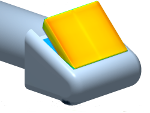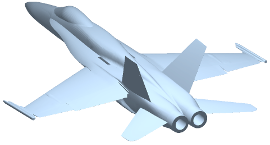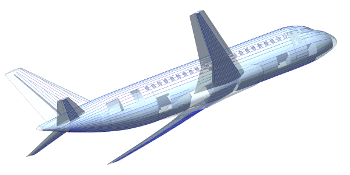
|
|
 Spatial Coupling Tools
Spatial Coupling Tools
FSCON and FSI are spatial coupling tools for weakly-coupled aero-elastic and aero-thermal multi-physics simulations, combining the B2000++ FE solver with the NSMB (Navier-Stokes Multi-Block) structured CFD solver. While FSCON (Fluid-Structure Connector) allows for the geometric definition of the coupling regions, FSI (Fluid-Structure-Interpolation) does the actual coupling calculations.
One of the problems encountered with coupled simulations is multi-region coupling, where regions behave according specific rules, such as differential deformations of i.e. flaps of wings. The FSCON (Fluid-Structure CONnector) software is a graphical preprocessor for defining and linking the coupling regions on both the fluid surface and on the structural model.
Based on geometric coupling information supplied by FSCON, the FSI (Fluid-Structure Interaction) tool implements multi-region geometric coupling algorithms. These geometrical coupling algorithms use radial basis function interpolation and are therefore node-based, thus, the fluid and structural geometries do not need to match exactly. Radial basis functions (such as volume-spline) produce smooth interpolants of the displacement field (except at the structural support points), which is important for RANS simulations.
The multi-region coupling is performed in hierarchical manner such that total forces and the total virtual work are preserved, and, depending on the spatial coupling method, total moments as well. Therefore, FSCON/FSI can be applied to flutter, in conjunction with NSMB's built-in modal solver and volume mesh deformation module.
Please contact SMR for more information on the availability of FSCON/FSI.





